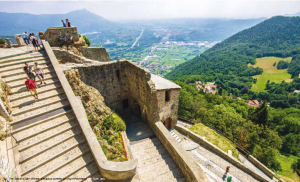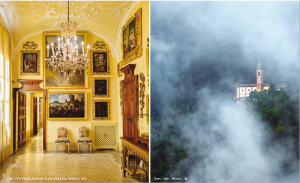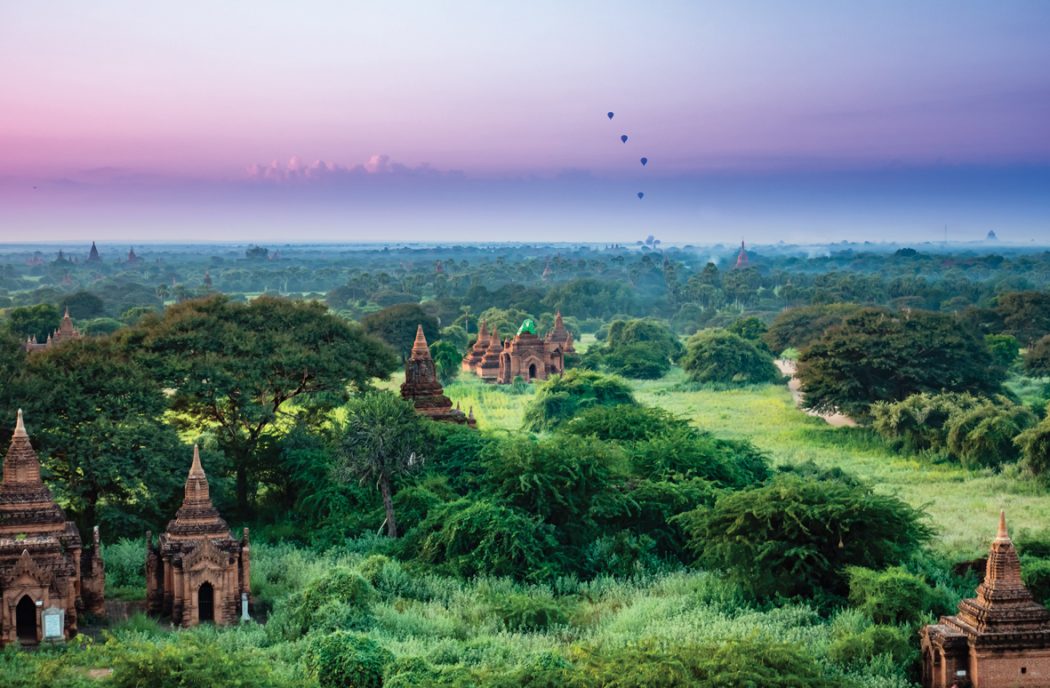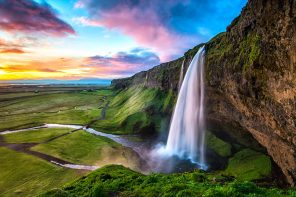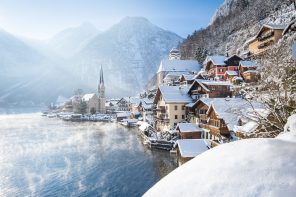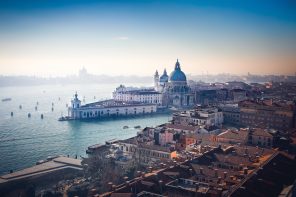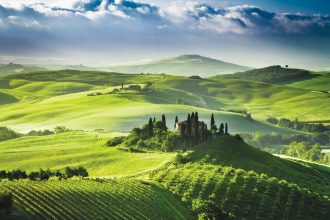INSPIRE’S top choices of the best city, region, country and value for your money for the next 12 months.
T R A V E L L E R ’ S C H O I C E 2 0 1 9
M Y A N M A R
B E S T C O U N T R Y
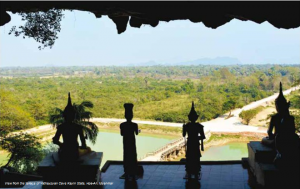
Myanmar delivers just about everything that a seasoned traveller could ever wish for. When you think of Asia, Myanmar stands out with its dazzling array of jaw-dropping temples, majestic palaces, mesmerising ancient ruins, stunning landscapes and a traditional way of life that holds unswayed against the growing demands of modern day tourism. Its cities display a trully unqiue fusion of British colonialism and Burmese flavour while natural wonders like Inle Lake and the northern hills enchant both visitors and locals with their charming scenes of rural life. If you’ve yet to discover what makes Myanmar so alluring, make 2019 the year you do and discover a hidden treasure like no other.
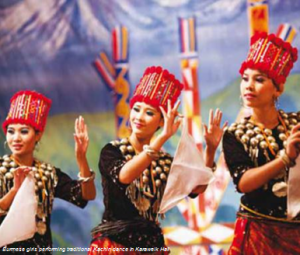
Kachin is one of the states that hosts an amazing festival known as Manaw. The Kachin, the mountain people or the ‘The Scottish People of Burma’ celebrate the Manaw festival around the early part of January. It is one of the most popular festivals in Myanmar. and has been held for more than three decades. There are different versions of the Manaw festival that are held to celebrate various occassions and events such as the New Year, battle victories, the reunification of tribal groups and much more. Everyone in the town gets involved in the spiritual dance in which people form a long line one behind the other. Traditional Manaw columns are decorated with vibrant and colourful Kachin images that are usually located at the centre of the festival site. All those who come to the festival wear their best traditional dress. The main activity of the event is the dance around the erected Manaw columns, which is quite similar to the totem poles used by North American Indians. The Manaw festival takes place in Myitkyina and Putao, in the state of Kachin.
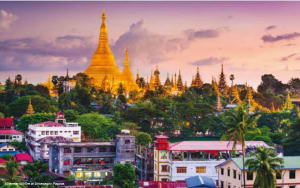
When you first set foot in Yangon, you will quickly discover that this Southeast Asian city is quite like no other in the world. With a population of just over 5 million, Yangon is bustling and filled with excitement. This city was once under the rule of the British Empire, and proof of this is quite evident when you marvel at the Victorian architecture of the colonial days throughout the city. Yangon is riddled with lush green parks, vast lakes, and warm people, and we’re certain that you’ll be almost amazed that you made the right choice for your next travel destination. There are many things to do and see in Yangon and we guarantee that your time will be well spent. There are a lot of tourist highlights and destinations within Yangon, but this city has a lot more to offer.
While roaming around the city of Yangon, it’s very hard to miss the sight of a very tall golden pagoda that may well catch your eye – Shwedagon, which is the most famous pagoda, in all of Myanmar. Built during the 6th century B.C. Shwedagon is said to hold eight strands of Buddha’s hair. It is a very sacred place of worship for the local people and an amazing site for tourists. With thousands of Buddha images, relics and hundreds of monks wondering around the temple, it is surely to capture your heart and soul. The pagoda also provides an excellent view of the city and its surroundings. You can easily spend a few hours gazing up at the gold covered tower, as well as exploring the different and lavishly decorated buildings within the complex. Shwedagon is also filled with rich history within its walls.
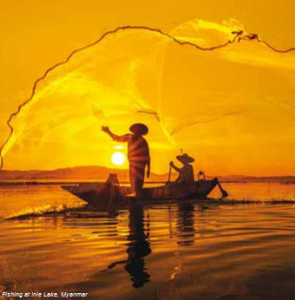
To continue your culture tour of Myanmar, head over to the National Museum in Yangon where it hosts one of the great est collections of artifacts from around the country. Here you can begin to understand how the deep culture and history of this nation. The displays range from Myanmar paintings, ancient ornaments and jewelry, culture of the ethnic races, and various craftworks. A trip will give you the appreciation you need to have a better feel for the culture of Myanmar.
Of course no trip to Myanmar is complete without a visit to Bogyoke or Scott market located in the southern part of the city near Chinatown. It is known for its lively upbeat vibe which hosts a variety of goods from all over Myanmar ranging from jewelry, paintings, handicrafts, lacquer wear, wood and stone carvings, gems, and so much more. If shopping wears you out and you are looking for a tasty bite, Bogyoke has a wide assortment of traditional Burmese food to try which is a different experience than just eating at a typical restaurant.
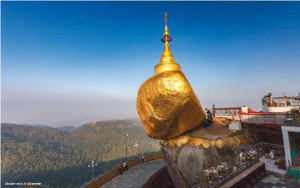
During February, the Mahamuni Pagoda festival falls on the full moon of Thabodwe and, as a rule, lasts for 14 days. Visitors during this time can enjoy watching competitions that are held on the pagoda platform for the production of sticky rice (a famous delicacy in Myanmar). On the full moon day (19 February), a variety of incense sticks are lit directly in front of the Mahamuni pagoda. During these festive seasons, thousands of visitors make the pilgrimage to the Mahamuni pagoda where it always becomes the centre of activities. It later explodes into an evening of entertainment like Zats (a variety of dances, song and short theatre performances) and Anyeints. The event lasts for several hours. Comedians also provide fun and laughter at these events. which are usually broken up by traditional dances and open-air films. You can also indulge among the many selection of Burmese snacks that are sold on small stands.
Another big new year festival can be found in Kham-Ti and the surrounding villages of Kham-Ti, the annual Naga New Year’s Festival is held from 12 – 18 January. On 12 January, there is the opening ceremony of the Naga New Year Festival with various competitions and traditional sports, along with the coming together of the Naga subtribes. These were once feared warriors in their bright and exotic festival costumes, celebrating with rice wine and grilled meat and accompanied by ancient tribal dances and a loud drumbeat.
The Ananda Pagoda Festival is held from 15 – 20 January. The entertainment includes Zats: A colourful round dance with singing, short and long theatre performances; Anyeints: open-air performances lasting several hours, during which comedians caricature current events. Traditional dances and popular films are shown in between. During the festival, there is also a popular market that takes place, where a variety of items and many local products are sold. An interesting feature of the festival is the caravan of ox carts on the grounds of the pagoda situated under the shade of trees. The most popular time to visit the festival is full moon day, on the 20th January.
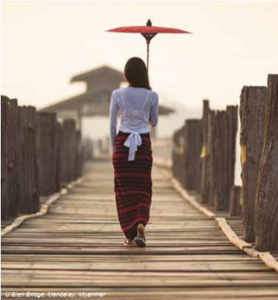
Located approximately 200 km from Myitkyina, approx. five hour drive to Indawgyi. The festival is celebrated every year over 10 days. One impressive feature is the two sandbanks, which appear from the lake just in front of the festival, allowing people to pass from the riverbank to the pagoda. The locals reserve a sandbank for the people. The second passage is meant for the gods. Shortly after the festival, both sandbanks disappear again into the water.
T R A V E L L E R ’ S C H O I C E 2 0 1 9
K O T A K I N A B A L U
B E S T F O R N A T U R E & W I L D L I F E
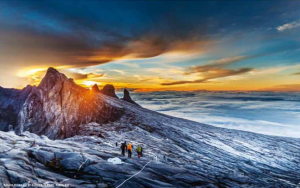
Our traveller’s choice for Nature & Wildlife is none other than Kota Kinabalu. We don’t even know where to begin given the vast array of natural wonders and wildlife highlights that this unsung paradise has to offer. Perhaps a great place to start is the biggest attraction of them all – Mount Kinabalu . Standing majestically at 4,095m (13,435 feet above sea level), Mount Kinabalu is the highest mountain between the Himalayas and New Guinea. Mount Kinabalu derives its name from the Kadazan word, ‘Aki Nabalu’, meaning ‘the revered place of the dead’. It is one of the safest and most conquerable peaks in the world—provided that you’re reasonably healthy and physically fit. Nature lovers will be delighted to be able to witness the many variations of flora and fauna that are to be found on the mountain at different altitudes.
Proudly situated in the heart of downtown Kota Kinabalu for almost four decades, Hyatt Regency Kinabalu offers authentic five-star Sabahan hospitality into a refined oasis where a journey of exciting and breathtaking experiences awaits. Served as a popular gateway to the exotic islands of Tunku Abdul Rahman Marine Park and home to one of the tallest Mountain in Southeast Asia – Mount Kinabalu; Kota Kinabalu has a lot to offer with its rich culture, history and artistry that are unique to its own. The hotel is 15 minutes from Kota Kinabalu International Airport and five minutes from the sea port.
Hyatt Regency Kinabalu houses 288 guestrooms, including a Presidential Suite, 12 Regency Executive Suites and 4 Regency Suites, are as elegant as they are tastefully furnished with the finest comforts. All guestrooms, including the Regency Club™ Lounge, the Presidential Suite and Regency Club rooms and suites, have been transformed to give them a “home-away-from-home” ambience, and are furnished with soft neutral colours and natural textiles, as well as brand-new furnishings that complement the eco-treasures of Borneo.
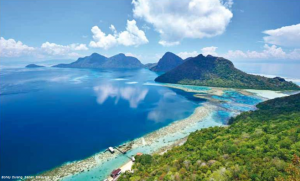
To get a bigger slice of wildlife adventure, make sure to check out the best that Borneo has to offer by exploring Sabah – a destination filled with exoticness, diversity, unique cultures, beaches, and food for all kinds of taste buds. It’s a place where adventure awaits; a destination for both business and family leisure.
Vacationing activities can start as soon as you land. The Tunku Abdul Rahman Park (TARP) is a group of five islands namely; Sapi, Gaya, Manukan, Sulug and Mamutik Islands, each located within minutes of each other. A 250m zipline from Gaya to Sapi using the Coral Flyer could be your first taste of adventure.
Much of your Sabah holiday will probably be spent on water – whether it’s a quiet sunset cruise or a pumped up party on board the North Borneo Cruises package on the South China Sea.
Twice a week, the oldest running steam train, the North Borneo Railway (NBR) travels over 35 miles into Papar, the interior of Sabah. Established in 1896 by the British North Borneo Chartered Company, the train was originally intended to transport tobacco from the interior for export. Today, the railway is mostly used to experience the bygone era of the colonial era. For those with a competitive edge, get a taste of Bornean thrill by visiting the race courses in the hilly interior designed to especially award participants with beautiful raw views that can’t be seen from sitting inside a tour bus. Every year up to a thousand people would participate in 50km, 100km and even 250km running events for bragging rights such at The Most Beautiful Thing (TMBT) Ultra Trail Marathon, Borneo Ultra Trail Marathon, and mountain bike races.
Of course, there are less-action-packed activities to do. Like bird-watching the 688 resident and migratory species that flock into Sabah, 54 of which are endemic to Borneo. The Bornean Bristlehead, according to avid bird lovers, is a rare and elusive species and can only be found in lowland forests of Borneo. There is a Borneo Bird Fest held every year in Sabah held either at the Kinabalu Park or the East Coast in Sandakan.
Sandakan is the wildlife capital for Sabah. The familiar orang utan at the Sepilok Orang utan Rehabilitation Sanctuary is a must-visit. It is the leading centre of excellence for orang utans in Borneo which offers a less rugged experience where visitors can view, from a platform, how rescued orang utans are nursed and released back into the wild. Next to it, the Bornean Sun Bear Conservation Centre nurses adorable sun bears. The Rainforest Discovery Centre located within the vicinity has a long canopy walkway for an opportunity to sight 250 species of birds and the one of the few places to see the Giant Red Flying Squirrel.
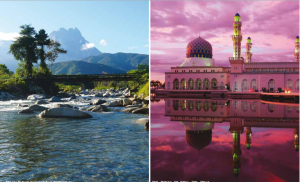
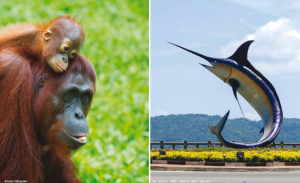
Presently, there are more than 200 events held every year, and many other attractions to visit. Sabah is gifted with a long coastline with stretches of white sandy beaches and turquoise crystal clear water and hundreds of islands. These islands are well-known for scuba diving, water sports, snorkeling or just plain relaxing. Some have planned destination weddings by the beaches, against a backdrop fiery sunsets. Many of Sabah’s beaches are still not discovered by tourism, do find out how you can enjoy a private lot at the beach and a peace of mind.
Diving is a major market for Sabah, the jewel Sipadan island being one of the top-rated dive spots in the world. At nearby islands such as Mabul, Kapalai, Mataking and Pom Pom islands, large marine life and tiny sea creatures and colourful corals and reef are guaranteed sighting. At the islands, high to medium range resort facilities await.
Over 90% of Sabah’s arrivals come by air. Presently Sabah enjoys more than 180 direct international flights weekly that connects its capital, Kota Kinabalu to major airports in Kuala Lumpur, Seoul and Busan (Korea), Tokyo (Japan), Hong Kong, Beijing, Shanghai, Shenzhen, Guangzhou, Hangzhou, Wuhan, Kunming, Chengdu, Changsa, Fuzhou and Xiamen (China), Singapore, Jakarta (Indonesia), Bangkok (Thailand), Perth (Australia), Taipei (Taiwan), Manila (the Philippines) and Bandar Seri Begawan (Brunei).
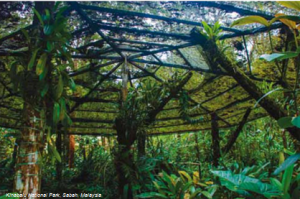
Hotel and resort chains are running a vibrant business in Sabah. New chain hotels that joined recently are Hilton Kota Kinabalu, Mecure and Marriott Kota Kinabalu. There are more than 27,000 rooms available in total with more than 3,000 rooms in 5-star facilities located throughout the city, coastal areas as well as in the heart of the Bornean rainforest. The top choice Borneo Rainforest Lodge for example, at the Danum Valley Conservation Area is a high end resort facility located in a virgin rainforest with surroundings hundreds of years of age which includes an ancient burial ground and guaranteed wildlife spotting.
Last year, Sabah recorded a total nett arrivals of 3.684 million. An estimated RM7.829 billion was generated in tourism receipts. By 2019-2020, the Sabah International Conventional Centre will begin operations and an international port will further characterize the city of Kota Kinabalu that will keep Sabah as vibrant and competitive as other destinations in the region.
T R A V E L L E R ’ S C H O I C E 2 0 1 9
K R A B I
B E S T F O R H O L I D A Y VA L U E
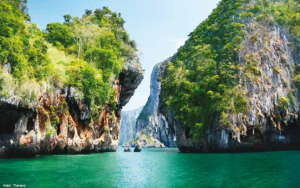
Deep within an area of lush mangrove forests and limestone karsts, Krabi is a Province in Thailand near the Andaman coastline. Known for its stunning beaches and beautiful islands, it has slowly but steadily risen as one of the most popular places to visit in Thailand. An overwhelming list of great places to visit in Krabi, make it a heavy favorite holiday destination among beach goers and seasoned travellers. But apart from the pristine beaches and exotic paradise life, Krabi also gets its charm from the holiday value that many travellers enjoy as they experience a world class paradise at a fraction of a cost. Hence, we award our Traveller’s Choice for Holiday Value to this Thai gem. While we help you freeze some of the key attractions that you must have in your itinerary, make sure you are closing down on your booking dates just in time for the 2019 new year rush.
There are a number of places to visit in Krabi that will cater to any traveller’s desire. Check out some of the more popular names such as Tab Kak Hang Nak Hill, PhraNang Cave Beach, Railay Beach Viewpoint, Poda Island, Hong Islands, Pranang Cave, Emerald Pool, Wat Kaew Ko Wararam, Saline Hot Spring Khlong Thom, Koh Panyi Floating Muslim Village, Ao Nang Krabi Thai Boxing Stadium, Huai To Waterfall, Chao Fah Night Market, Kwam Im, Andaman Cultural Center and Dragon Crest.
Out of all these places, Railay Beach is, without a shadow of a doubt, the most popular! Glittering white sand, stunning landscapes, shining sun, transparent water and the tropical climate of Railay Beach are the elements that make visitors want to come back for more. However, all these things aren’t what makes it unique; what indeed set it apart is its limestone caves situated along high and mighty cliffs. Even though it is accessible only by boats due to its sharp cliffs on both sides, Railay Beach has been able to gain its popularity as one of the best places to visit in Krabi. Apart from its few long-tailed boats and lively bars, the island is secluded.
Set out on foot to explore these majestic caves. If you know the right people, or if you are not shy on shelling out some extra bucks then indulge in a yacht party as you float on clear waters while sipping your favourite cocktail.
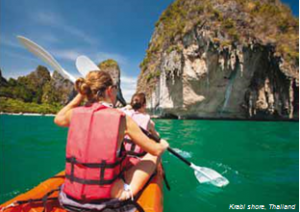
The temperature around the province is always pleasant at about 32° Celsius. There are only two seasonal spells in Krabi – one is the dry season and the other being the rainy season. You can either visit during the rainy season which typically is from June to November and are the best months to soak in the moisture. Or you can opt for the dry months and enjoy the sunshine. However, January to late March is the best time to visit Krabi. Clear skies, pleasant weather, calm sea, and a moderate crowd welcome you to the shores of this coastal paradise.
If you’re after nature instead of sun and sand, Krabi also has Thung Teo Forest Natural Park fabled for its beauty and ethereal landscapes. Expect to find high trees, deep emerald-colored water, abundant wildlife and an untouched beauty. The stunning waterfall in the middle of the Natural Park gives off a feeling of surrealistic charm. Thung Teo Forest Natural Park is one of the best places to visit in Krabi often bustling with for photographers and nature lovers. The park offers various opportunities and landscapes to capture this otherworldly beauty. Grab your selfie stick and set out to capture these beautiful moments. Dive in the Emerald Pool or a picnic basket and munch on comfort food while exploring the wilderness of the Park. Indeed, Krabi delivers everything you can ever hope for.
T R A V E L L E R ’ S C H O I C E 2 0 1 9
P H Ú Q U O C
B E S T F O R E X O T I C G E T A W A Y
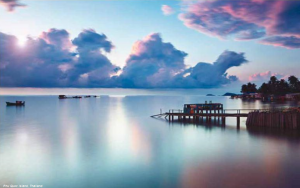
For 2019’s choice for exotic getaway, our Traveller’s Choice goes to Phu Quoc, where modernity meets tranquility. The Phu Quoc district is made of 28 islands, most of which are uninhabited while some are planned for development as private resorts. Spanning 574 square kilometres, Phu Quoc Island, where most of the tourism takes place, is the largest in the district as well as in the Gulf of Thailand. One of the region’s most famous and beautiful remote islands is Hon Xuong – often referred to as the Robinson Crusoe island after its famous namesake novel – and can currently only be accessed by boat. With no accommodation available on site, the island is a popular day trip spot making it an ideal place for tranquility seekers and its protected waters and picturesque beach can be enjoyed overnight by camping along the beach as part of a tour, but not independently.
Experience paradise on earth at Premier Village Phu Quoc Resort this year-end holiday with your beloved family and friends. Stretching across the length of the peninsula, all villas are built at different heights from the sea level, categorised into over-water Island Villas, captivating Beachfront homes and magnificent hilltop On The Rock mansions. All the multistorey villas offer a pleasing home feeling with three to four bedrooms and spacious living room with kitchenette. Nature lovers can enjoy a range of activities at this paradise, such as kayaking, paddling, biking or simply finding the best spot to contemplate the stunning oceanic view at dusk or dawn. Those looking for a calm piece of mind can find themselves on a relaxation journey at Plumeria Spa, located on top of the hill, offering picturesque sunset view over the resort.
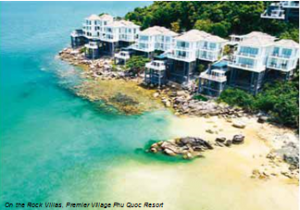
Diverse culinary options range from casual all-day-dining restaurant The Market, the elegant Mediterranean Restaurant Corallo, to the swim up Pool Bar or the convenient Grocery store. Each element is well designed to complete a memorial retreat experience for guests at Premier Village Phu Quoc Resort Managed by AccorHotels.
Enjoy better price at up to 20% discount when book for longer stay, to leisurely embrace every moment with your loved ones. Offer only valid for direct bookings at accorhotels.com/B2R4 and from third nights onwards. Book online at accorhotels.com/B2R4 or email: HB2R4@accor.com.
T R A V E L L E R ’ S C H O I C E 2 0 1 9
C O P E N H A G E N
B E S T C I T Y
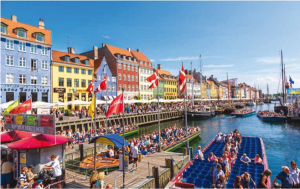
Known amongst the well-travelled as the “Capital of Cool”, Copenhagen will, without a doubt, continue to be included in the upper echelon of the top travel destinations this 2019.
With a perfect mixture of rich intellectual and artistic heritage, the charm of Copenhagen comes from the three aspects of Danish life: simplicity, politeness, and equality. The culture in Denmark has made for a happy and peaceful population willing to pay the world’s highest taxes in return for a rock solid coverage of health care, unemployment, and many other social services provided by the Danish government.
A simple life is the lifeblood of the culture of Denmark. Not much emphasis is given to material things or high income, and bragging is considered rude. When meeting the citizens of Denmark, culture plays a big part of the type of proper greetings that you’ll witness. Introductions are often made on a first-name basis and then followed by a handshake.

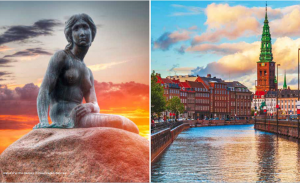
When it comes to the food scene, Denmark’s food culture goes beyond seafood and its traditional pickled herring. Part of their customary lunch consists of smorrebrod (open sandwiches). There’s also the kolde bord (cold buffet) for lunch, frikadeller (meatballs), hakkebof (chopped meat patties), polser (hot long sausages), and many other dishes that are uniquely Danish. The culture around Danish food has become more diversified over the years, and you can find almost any kind of food selections scattered around the major cities.
Make sure to tickle your taste buds by visiting the pioneering Noma, where they set up their new digs with their own urban farm right in the heart of Copenhagen. While, just up the road is the recent transformation of a former shipyard into Reffen, a streetfood market which features dishes and cuisines from around the world.

This 2019, the famous and historic amusement park Tivoli Gardens will be melting the winter blues with its new February season. You can also check out Rem Koolhaas’s amazing cultural centre Blox, which is now home to the Danish Architecture Centre. Finally, changes to the metroline mean it’s gonna be even more convenient to make your way around awesome Copenhagen.
T R A V E L L E R ’ S C H O I C E 2 0 1 9
P I E D M O N T
B E S T R E G I O N
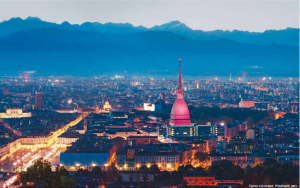
Surprisingly over the years, the region of Piedmont in Italy has remarkably remained under the radar for most travellers. Expect to discover endless cultural assets that are sure to impress throughout Turin’s beautiful city centre. But, out in the capital of once bleak industrial outskirts, you’ll find cool new art hubs. Add to that all of Piedmont’s rural village charm that offers some of Italy’s best red wine and white truffles and this region might not stay as the savvy traveller’s secret for much longer.
The name Piedmonte is derives from medieval Latin Pedemontium or Pedemontis, meaning “at the foot of the mountains”. Indeed Piedmont is surrounded on all three sides by the Alps, which include the 3,841-meter-high Monviso, where the Po river begins, and Monte Rosa, the second highest mountain in the Alps.
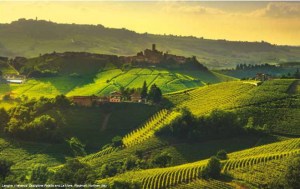
Right at the border in the region’s north-eastern portion is the beautiful Lake Maggiore, Italy’s second largest lake. The pleasant lakeside town of Stresa is the gateway to the Borromean islands, which feature terraced gardens and aristocratic villas.
Piedmont’s main city is Turin, which, following the unification of Italy in 1861, was the country’s first capital, with the noble House of Savoy, becoming the Kings of Italy until World War II. Cars, chocolates and a soccer team may be some of Turin’s “claim to fame”, but there’s more to this elegant city than Fiat, Gianduiotto and Juventus Football Club. Its long and important history is reflected in the city’s architecture and vibe, from the typical Roman street grid, still visible in the historic center, to the wide boulevards lined with porticoes and Baroque palaces, an Italo-French imprint given by the long domination of the House of Savoy.
A few kilometers just outside Turin is the Palace of Venaria, the grand hunting residence of the Savoy family, built during the 17th and 18th centuries, and included in Unesco’s World Heritage list since 1997. The name of the palace derives from the Latin Venatio Regia, which means “Royal Hunt”. Piedmont is clearly one of Italy’s pioneering gastronomic regions and it’s perhaps no coincidence that Eataly, the upscale chain selling high-quality Italian foods and wines, was founded right in the heart of the region, when Italian businessman Oscar Farinetti converted a closed vermouth factory in Turin into the first location of Eataly in 2007. Today, it now boasts 27 stores around the world with the headquarters still in Monticello d’Alba, in the province of Cuneo.
Piedmont is also ideal for a relaxing and pampering vacation thanks to the historic spa towns of Acqui Terme and Vinadio, where rejuvenating spring waters flow naturally. Incidentally, Acqui Terme is the main winemaking town for Brachetto, a red wine that is a pairing favorite with desserts.
